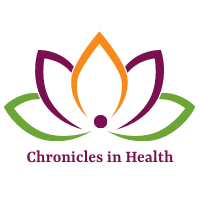Have you ever really looked over all the spices at the grocery store and wondered what each one is used for? The basic spices like black pepper and cinnamon are pretty well known, but what about all the other ones? How do you know how to use each spice? Do these spices have any health benefits? Well, I am starting a series where we will look at different spices including health benefits and how to use them. It turns out that many ancient manuscripts document the use of spices for medicinal treatments. Spices are powerhouses of nutrition that we can add to our food, enjoy the great flavors, and reap the health benefits. Let’s start this journey with the spice cardamom.

Cardamom is a member of the ginger family and is considered the queen of spices (black pepper is king). It has been used to add both sweet and savory flavor to foods. It is widely used in Indian, Middle Eastern, Arabic, and Scandinavian cuisine. There are two types, green and black cardamom.


Green cardamom is true cardamom (elettaria cardamomom). It is the best choice for sweet dishes but works in savory dishes, too. It is grown in Guatemala (largest exporter), India, Malaysia, and Costa Rica.
Black cardamom (amomum subulatum) is grown in the eastern Himalayas and has a minty, smokey flavor that works well in savory dishes.
Cardamom was the 8th most expensive spice in the world with the average cost of $30.00 per pound in 2019. It has been used in both Ayurvedic and traditional Chinese medicine and is one of the world’s most ancient spices. Let’s take a look at some of the benefits of cardamom.
Benefits
Heart Health
- Reduced total cholesterol by 31% in studies done with rats
- Lowered high blood pressure in a small study of 20 adults
- Traditional Chinese medicine used it to improve blood circulation
Antibacterial Effect
- Research suggests that cardamom may limit pathogenic bacteria in our intestines while not harming beneficial ones
Digestive Health
- Cardamom has been used for digestive issues such as to relieve acidity, stomach cramps, and combatting flatulence
- Appears to be helpful in protecting against H.pylori (Helicobacter pylori is a gram-negative bacterium that can often cause gastric challenges)
- May have the ability to heal stomach ulcers according to rat studies
Cancer Fighter
- Certain compounds in cardamom may fight cancer and hinder tumor growth in studies done with mice
- Cardamom and cinnamon combined has been shown to reduce colorectal cancer risk by 48% in studies
Dental Health
- May assist in the fight against cavities, gum disease, and bad breath
- Ancient Egyptians chewed cardamom seeds as a way to clean their teeth
Other Health Benefits
- In Ayurvedic medicine, cardamom was used to detoxify the body and improve liver function
- Traditional Chinese medicine used it to treat colic, constipation, diarrhea, vomiting, and headache
Forms available
- Whole seed pods
- Seeds
- Ground spice powder
- Essential oil (caution should be used in consuming any essential oils).
- Herbal supplement (supplementation should be done under the direction of your health support team)

Some ways that cardamom is used are in curries, coffees, teas, flavored fruit dishes, pastries, meatball, and sausage. It can be added to pumpkin, squash, and sweet potato to enhance flavor, season roasted vegetables, and I have used a little in many dishes to add more depth to the flavors.
Cardamom is considered safe for most people when consumed in their diet so enjoy the “Queen of Spices” and her healthy benefits! Have you tried cardamom? Do you have a favorite recipe that you use it in?
Be blessed and be a blessing,
Heather
Sources:
- Kiple, K. and Ornelas, K. (2000). Cambridge world history of food, volume II. Cambridge University Press, USA.
- Murray, M. (2005). The encyclopedia of healing foods. Aria Books. New York, NY.
- https://www.greenmedinfo.com/blog/five-benefits-cardamom-health-conscious?utm_campaign=Daily%20Newsletter%3A%20Five%20Benefits%20of%20Cardamom%20for%20the%20Health%20Conscious%20%28N5Cubs%29&utm_medium=email&utm_source=Daily%20Newsletter&_ke=eyJrbF9lbWFpbCI6ICJoZWF0aGVyQGNocm9uaWNsZXNpbmhlYWx0aC5jb20iLCAia2xfY29tcGFueV9pZCI6ICJLMnZYQXkifQ%3D%3D
- https://www.medicalnewstoday.com/articles/326532.php#risks-and-side-effects
- https://foodfacts.mercola.com/cardamom.html
Posts may contain affiliate links. If you purchase a product through an affiliate link, your costs will be the same but Chronicles in Health will receive a small commission. This helps cover some of the costs for this site. I appreciate your support!
The information, including but not limited to, text, graphics, images and other material contained on this website are for informational purposes only. The purpose of this website is to promote broad consumer understanding and knowledge of various health topics. It is not intended to be a substitute for professional medical advice, diagnosis or treatment. Always seek the advice of your physician or other qualified health care provider with any questions you may have regarding a medical condition or treatment and before undertaking a new health care regimen, and never disregard professional medical advice or delay in seeking it because of something you have read on this website.


